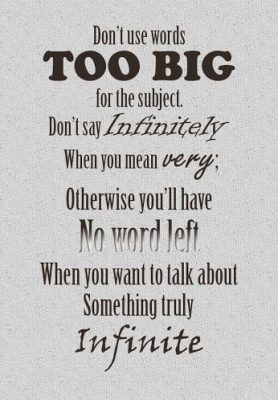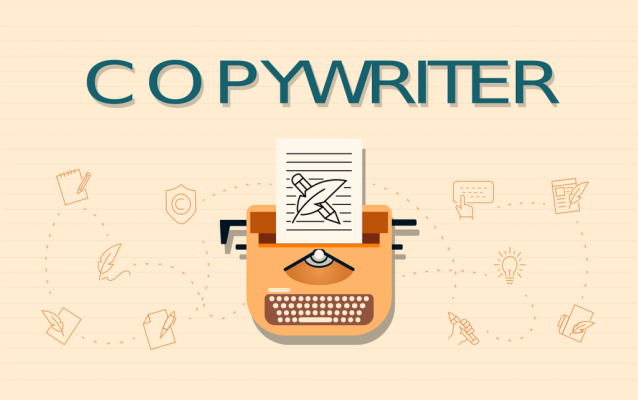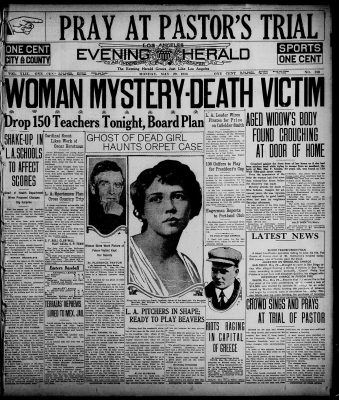Mastering the Art of Copywriting That Sells

Introduction to Copywriting
Copywriting is a powerful tool in the world of marketing and advertising. It is the art of crafting compelling and persuasive written content that aims to persuade an audience to take a specific action, such as making a purchase, signing up for a service, or requesting more information. Effective copywriting can make all the difference in the success of a marketing campaign, as it has the ability to engage, inform, and ultimately persuade potential customers.
When it comes to copywriting that sells, there are several key factors to keep in mind. First and foremost, it is essential to understand your target audience and tailor your messaging to resonate with their needs, desires, and pain points. By speaking directly to your audience and addressing their specific concerns, you can create copy that is more likely to convert and drive sales.
Another important aspect of effective copywriting is the use of persuasive language and compelling storytelling. By tapping into the emotions of your audience and creating a sense of urgency, you can motivate them to take action and make a purchase. This can be achieved through the use of strong headlines, engaging anecdotes, and convincing calls-to-action that prompt readers to click, buy, or sign up.
In addition to crafting persuasive copy, it is also crucial to optimize your content for search engines. By incorporating relevant keywords and phrases into your copy, you can improve your search engine rankings and attract more organic traffic to your website. This can help to increase brand visibility, generate leads, and ultimately drive sales.
Copywriting examples for beginners
1. Headlines:
One of the most crucial elements of copywriting is the headline. A strong headline should grab the reader’s attention and entice them to continue reading. Here are some examples of impactful headlines:
– “Unlock the Secret to Success with Our Proven Marketing Strategies”
– “Discover the Best Kept Beauty Secrets of Celebrities”
– “Transform Your Home with These Budget-Friendly DIY Tips”
These headlines are clear, concise, and offer a promise or benefit to the reader. Beginners can take note of the use of power words, curiosity-inducing phrases, and specific benefits to make their headlines more compelling.
2. Calls to Action (CTAs):
Another essential aspect of copywriting is the call to action. A well-crafted CTA prompts the reader to take a specific action, such as making a purchase, signing up for a newsletter, or contacting the business. Here are some examples of effective CTAs:
– “Shop Now and Save 20% on Your First Order”
– “Subscribe to Our Newsletter for Exclusive Offers and Updates”
– “Contact Us Today for a Free Consultation”
These CTAs are clear, concise, and create a sense of urgency or exclusivity. Beginners can learn from these examples by focusing on the desired outcome and using strong, action-oriented language to drive conversions.
3. Benefits-focused Copy:

Successful copywriting focuses on highlighting the benefits of a product or service rather than just listing its features. By emphasizing what the customer will gain from the purchase, beginners can create a more compelling message. Here are some examples of benefits-focused copy:
– “Our All-Natural Skincare Products Will Rejuvenate Your Skin and Boost Your Confidence”
– “Get More Done in Less Time with Our Time Management Course”
– “Improve Your Health and Fitness with Our Personalized Meal Plans”
These examples clearly communicate the value proposition to the reader and address their needs and desires. Beginners can follow suit by identifying the unique selling points of their offering and highlighting the benefits that resonate most with their target audience.
4. Emotional Appeal:
Emotions play a significant role in persuasive copywriting, as they can help create a connection with the reader and compel them to take action. By evoking emotions such as joy, fear, excitement, or nostalgia, beginners can make their copy more relatable and engaging. Here are some examples of emotionally resonant copy:
– “Don’t Miss Out on This Limited-Time Offer – Act Now!”
– “Relive Your Childhood Memories with Our Classic Toys Collection”
These examples tap into different emotions to capture the reader’s attention and create a sense of urgency or desire. Beginners can experiment with incorporating emotional triggers in their copy to enhance its impact and effectiveness.
5. Storytelling:
One of the most powerful techniques in copywriting is storytelling. By weaving a narrative that engages the reader and makes them feel connected to the brand or product, beginners can create a memorable and impactful message. Here are some examples of storytelling in copywriting:
– “From Humble Beginnings to Global Success: The Inspiring Story of Our Founder”
– “Meet Sarah: How Our Wellness Program Transformed Her Life”
– “The Journey of a Lifetime: Explore the World with Our Adventure Tours”
These examples demonstrate how storytelling can humanize the brand, build credibility, and evoke empathy or inspiration in the reader. Beginners can learn from these examples by incorporating personal anecdotes, customer testimonials, or brand origin stories to make their copy more engaging and compelling.
Effective Copywriting Examples
One effective copywriting example is Apple’s “Get a Mac” campaign from the mid-2000s. The ads featured two characters, one representing a Mac computer and the other a PC, and highlighted the superior performance, design, and user experience of the Mac over the PC. By framing the comparison in a humorous and relatable way, Apple effectively communicated the benefits of their product to their target audience of tech-savvy consumers.
Another important aspect of effective copywriting is using language that resonates with your audience. This means using words and phrases that evoke emotion, create a sense of urgency, or inspire trust and credibility. For example, a clothing brand targeting young, fashion-conscious customers might use trendy and aspirational language in their copy, while a financial services company targeting older, more conservative clients might use terms like “secure,” “reliable,” and “trusted.”

One standout example of this principle in action is Nike’s “Just Do It” campaign, which has been running since 1988. The slogan, which conveys a message of empowerment, determination, and perseverance, has become synonymous with the Nike brand and has helped position the company as a leader in the athletic apparel industry. By tapping into the emotional connection that many people have with sports and fitness, Nike has created a powerful and enduring brand identity that resonates with consumers around the world.
In addition to understanding your audience and using language that speaks to them, effective copywriting also involves creating a clear and compelling call to action. This is the part of the copy that tells the reader what they should do next, whether it’s clicking a link, filling out a form, or making a purchase. A strong call to action should be specific, easy to understand, and aligned with the overall goal of the copy.
A great example of a well-crafted call to action can be found in Amazon’s product descriptions. Each listing includes a prominent “Add to Cart” button that encourages visitors to make a purchase with just one click. The button is strategically placed near persuasive product descriptions, customer reviews, and images, creating a seamless shopping experience that drives conversions and boosts sales.
Copywriting Examples for Digital Marketing
When done effectively, copywriting can grab the attention of your target audience, convey your brand message, and ultimately drive them to take action. In today’s fast-paced online world, where consumers are constantly bombarded with information, it is more important than ever to create compelling copy that sells.

Once you have captured your audience’s attention with a strong headline, it is essential to keep them engaged with well-crafted body copy. Your body copy should be clear, concise, and persuasive. Use language that resonates with your audience and highlights the benefits of your product or service. Avoid jargon and technical language, as this can confuse and alienate your readers.
In addition to creating engaging copy, it is also important to incorporate visuals into your digital marketing strategy. Visuals can help communicate your brand message more effectively and capture the attention of your audience. Whether it is a striking image, an informative infographic, or a captivating video, visuals can help bring your copy to life and make it more memorable.
To illustrate the principles of effective copywriting for digital marketing, let’s look at some examples:
1. Call-to-Action (CTA) Buttons:
One common copywriting technique in digital marketing is the use of call-to-action (CTA) buttons. These buttons are designed to prompt the reader to take a specific action, such as making a purchase, signing up for a newsletter, or downloading a free resource. The copy on CTA buttons should be clear, concise, and action-oriented. For example, instead of using generic language like “click here,” try using more compelling phrases like “Get Started Now” or “Claim Your Free Trial.”
2. Product Descriptions:
When writing product descriptions for digital marketing, focus on highlighting the benefits of the product rather than just listing its features. For example, instead of saying “This watch has a stainless steel case and quartz movement,” try saying “This sleek watch keeps perfect time and adds a touch of sophistication to any outfit.” By emphasizing the benefits of the product, you can appeal to the emotions of your audience and increase the likelihood of making a sale.
3. Email Marketing Campaigns:
Email marketing is a powerful tool for digital marketers, but it is only effective if the copy is engaging and persuasive. When crafting email copy, it is important to personalize the message to the recipient and make it relevant to their interests. Use compelling subject lines to entice the reader to open the email, and use concise body copy to convey your message clearly. Incorporate visual elements like images or videos to make the email more visually appealing and increase engagement.
4. Social Media Posts:
Copywriting for social media posts requires a different approach than other types of digital marketing. Social media platforms have character limits, so it is important to be concise and to the point. Use eye-catching visuals and attention-grabbing headlines to stand out in a crowded feed. Incorporate hashtags and keywords to improve visibility and reach a wider audience. Remember to engage with your followers by responding to comments and encouraging interaction.
Effective Sales Copywriting

Copywriting that sells is the key to capturing the attention of your target audience, engaging them with your message, and ultimately convincing them to take action.
But what exactly makes sales copywriting effective? How can you craft compelling copy that not only resonates with your audience but also drives them to make a purchase?
1. Know Your Audience:
One of the first steps in creating effective sales copy is to truly understand your target audience. What are their pain points, desires, and motivations? What language do they use? By conducting thorough market research and creating buyer personas, you can gain valuable insights into who your audience is and what makes them tick. This information will allow you to tailor your copy to speak directly to your audience, addressing their specific needs and concerns.
2. Focus on Benefits, Not Features:
When crafting sales copy, it can be tempting to simply list the features of your product or service. However, effective copywriting goes beyond mere descriptions – it focuses on the benefits that these features provide to the customer. How will your product or service improve the lives of your audience? What problems will it solve for them? By highlighting the benefits of your offering, you can create a sense of urgency and show your audience how they stand to gain by making a purchase.
3. Create Compelling Headlines and Hooks:
In today’s fast-paced world, attention spans are shorter than ever. That’s why it’s crucial to grab your audience’s attention right from the start with a compelling headline or hook. Your headline should be concise, clear, and attention-grabbing, drawing readers in and enticing them to keep reading. Whether you’re using a question, a bold statement, or a teaser, make sure that your headline is compelling enough to pique curiosity and drive engagement.
4. Use Persuasive Language:
Effective sales copywriting is all about persuasion. You want to convince your audience that your product or service is the solution to their problems and that they can’t afford to miss out on what you’re offering. To do this, use persuasive language that appeals to emotions, triggers desire, and creates a sense of urgency. Whether you’re using testimonials, case studies, or storytelling, make sure that your copy is compelling enough to persuade your audience to take action.
5. Use Calls to Action:
A key component of effective sales copywriting is the call to action (CTA). Your CTA is a clear, actionable step that you want your audience to take, whether it’s making a purchase, signing up for a newsletter, or requesting more information. Your CTA should be prominently displayed, easy to understand, and compelling enough to prompt immediate action. By using strong, persuasive CTAs throughout your copy, you can guide your audience towards the desired outcome and drive conversions.
6. Test and Iterate:
Finally, to ensure that your sales copy is as effective as possible, it’s important to test and iterate on your messaging. A/B testing, split testing, and other methods can help you determine which copy is resonating with your audience and driving the best results. By analyzing data, gathering feedback, and making adjustments based on performance metrics, you can continuously refine and optimize your sales copy for maximum impact.
Effective email copywriting tips
Effective email copywriting is essential for any business looking to boost their sales and engage their audience. In today’s digital age, email marketing remains a powerful tool for reaching customers and driving conversions. However, with inboxes flooded with promotional emails, it can be challenging to stand out and capture the attention of your subscribers.
To create email copy that sells, there are several key tips and strategies that copywriters should keep in mind. In this article, we will explore some effective email copywriting tips to help you craft compelling and persuasive messages that drive results.
1. Take the time to research your subscribers and identify their needs, preferences, and pain points. By knowing who you are writing for, you can tailor your message to resonate with them and address their specific concerns.
2. Write a compelling subject line: The subject line is the first thing your subscribers will see when they receive your email. It is crucial to craft a subject line that grabs their attention and entices them to open the email. Keep it short and engaging, and consider using personalization or urgency to pique curiosity.
3. Keep it concise and scannable: People have limited attention spans, especially when it comes to reading emails. Keep your copy clear, concise, and easy to scan. Use bullet points, subheadings, and white space to break up large blocks of text and make your message more digestible.
4. Focus on benefits, not features: When writing your email copy, focus on the benefits of your product or service rather than just listing its features. Highlight how your offering can solve your subscribers’ problems or improve their lives. Use persuasive language to appeal to their emotions and show them why they need what you are offering.
5. Include a clear call to action: Every email should have a clear and compelling call to action (CTA) that tells the reader what you want them to do next. Whether it is to click a link, make a purchase, or sign up for a webinar, your CTA should be prominent and easy to follow. Use action-oriented language and create a sense of urgency to encourage immediate action.
6. Use storytelling: People are naturally drawn to stories, so incorporating storytelling into your email copy can help you connect with your audience on a deeper level. Share success stories, customer testimonials, or case studies that demonstrate the value of your product or service. Use narrative elements to create a compelling and memorable message.
7. Test and optimize: To ensure the effectiveness of your email copywriting efforts, it is essential to test and optimize your campaigns regularly. A/B testing different subject lines, CTAs, and copy variations can help you identify what resonates best with your audience and improve your overall conversion rates. Use analytics tools to track the performance of your emails and make data-driven decisions to enhance your copywriting strategy.
Copywriting Words That Sell
By using words and phrases that resonate with the target demographic, businesses can create a connection and build trust with their customers.
One of the most effective ways to create copy that sells is to use persuasive language. Words such as “amazing,” “exclusive,” “limited time offer,” and “free” can all help to create a sense of urgency and entice customers to make a purchase. By highlighting the benefits of a product or service and showcasing how it can improve the customer’s life, businesses can increase the likelihood of closing a sale.
Another key aspect of copywriting that sells is the use of emotional triggers. By tapping into the emotions of the reader, businesses can create a strong connection and motivate them to take action. Words such as “love,” “happiness,” “security,” and “success” can all evoke powerful emotions and encourage customers to make a purchase.
In addition to using persuasive language and emotional triggers, businesses should also focus on creating a sense of credibility and trustworthiness in their copy. By including statistics, testimonials, and endorsements from satisfied customers, businesses can build credibility and reassure potential buyers that they are making a smart purchasing decision.
It is also important to keep the copy clear and concise, avoiding jargon or complex language that may confuse the reader. By using simple, easy-to-understand language, businesses can ensure that their message is effectively communicated and understood by their target audience.
Write Strong Copy by Understanding Your Target Audience
Once you have a clear understanding of your target audience, it is important to identify their pain points and motivations. What are the problems they are facing that your product or service can solve? What benefits will they receive from choosing your offering over your competitors? By addressing these questions in your copy, you can position your product or service as the best solution to meet your audience’s needs.
In addition to understanding your audience’s pain points and motivations, it is also essential to consider their buying behavior and decision-making process. Are they more likely to make impulse purchases, or do they prefer to research and compare options before making a decision? By knowing how your audience prefers to buy, you can tailor your copy to guide them through the buying journey and encourage them to take action.
Your audience wants to know how your offering will improve their lives or solve their problems. By highlighting the benefits in your copy, you can create a sense of urgency and persuade your audience to take action.
Crafting Compelling Headlines and Hooks

Crafting compelling headlines and hooks is essential in the world of copywriting that sells. These elements serve as the first point of contact between a brand and its target audience, capturing the reader’s attention and enticing them to continue reading. In order to effectively engage with potential customers and drive conversions, copywriters must master the art of creating headlines and hooks that are irresistible and compelling.
The headline is arguably the most important element of any piece of copy. It serves as the first impression that a reader has of the content, and can make or break the success of the entire piece. A well-crafted headline should be attention-grabbing, concise, and relevant to the content that follows. It should pique the reader’s interest and entice them to keep reading.
When crafting a headline, copywriters should consider the target audience and the specific message that they are trying to convey. It is important to use language and tone that resonates with the reader and compels them to take action. For example, a headline targeted towards a younger demographic may use more informal language and slang, while a headline targeted towards a more professional audience may be more formal and straightforward.
In addition to being attention-grabbing, a headline should also be clear and concise. In today’s fast-paced digital world, readers have short attention spans and are bombarded with information from all directions. A headline that is too long or complicated is likely to be overlooked in favor of something more easily digestible. Copywriters should strive to keep their headlines to a maximum of 10-15 words, ensuring that the message is clear and to the point.
Hooks, on the other hand, serve as the supporting players to the headline’s leading role. While the headline captures the reader’s attention, the hook keeps them engaged and encourages them to continue reading. Hooks can take many forms, including statistics, anecdotes, or questions, but they all serve the same purpose: to draw the reader in and make them want to learn more.
When crafting hooks, copywriters should focus on creating an emotional connection with the reader. By tapping into the reader’s emotions and desires, hooks can create a sense of urgency and compel the reader to take action. For example, a hook that plays on the reader’s fear of missing out (FOMO) or desire for success is likely to be more effective than one that is purely informational.
In addition to creating an emotional connection, hooks should also be relevant to the content that follows. A hook that promises one thing but delivers another is likely to leave the reader feeling disappointed and disengaged. Copywriters should ensure that the hook sets the right expectations for the rest of the copy, delivering on the promise made in the headline.
Utilizing Persuasive Language and Calls to Action
Make your calls to action clear, specific, and actionable. Use strong verbs that prompt action, such as “buy now,” “subscribe today,” or “learn more.” Position your call to action prominently in your copywriting, whether it is at the end of a sales pitch, in a banner ad, or within an email campaign. Make it easy for your audience to take the desired action by providing clear instructions and removing any barriers or obstacles.
Incorporating persuasive language and calls to action into your copywriting can significantly enhance the effectiveness of your marketing efforts. By crafting compelling messages that resonate with your target audience and prompt them to take action, you can drive engagement, conversions, and ultimately, sales. Remember to understand your audience, highlight the benefits of your offering, create a sense of urgency, and make your calls to action clear and actionable. By implementing these strategies, you can create copywriting that sells and achieves your marketing goals.
Incorporating Social Proof and Testimonials
One effective way to cut through the noise and persuade potential customers to make a purchase is by incorporating social proof and testimonials into your copywriting.
Social proof refers to the concept that people are more likely to engage in a certain behavior if they see others doing the same. This psychological phenomenon can be a powerful tool in influencing consumer behavior and building credibility for your brand. By showcasing positive feedback, reviews, and testimonials from satisfied customers, you can instill confidence in potential buyers and demonstrate the value of your products or services.
Testimonials, in particular, are a form of social proof that can have a significant impact on your copywriting efforts. When a satisfied customer shares their positive experience with your brand, it serves as a compelling endorsement that can sway hesitant buyers and encourage them to take action. Testimonials provide real-world examples of how your product or service has solved a problem or fulfilled a need, making it easier for prospects to relate and envision themselves benefiting from what you have to offer.
Incorporating social proof and testimonials into your copywriting can help build trust and credibility with your target audience. When potential customers see that others have had positive experiences with your brand, they are more likely to believe in the value of your offerings and feel confident in making a purchase. By leveraging the power of social proof, you can create a sense of legitimacy and authenticity that resonates with consumers and motivates them to take the next step towards conversion.
There are several strategies you can use to effectively incorporate social proof and testimonials into your copywriting. One approach is to prominently feature customer reviews and testimonials on your website, landing pages, and marketing materials. By showcasing positive feedback from satisfied customers, you can create a sense of transparency and credibility that instills confidence in potential buyers.
Another effective tactic is to highlight specific benefits or outcomes that customers have experienced as a result of using your product or service. By including real-world examples and success stories in your copywriting, you can demonstrate the tangible value that your offerings provide and show how they can make a positive impact on the lives of your customers.

In addition to showcasing customer testimonials, you can also incorporate other forms of social proof into your copywriting. For example, highlighting endorsements from industry experts, influencers, or celebrities can add an extra layer of credibility and authority to your brand. By associating your offerings with respected authorities in your field, you can further enhance your reputation and position yourself as a trusted and reliable source of products or services.
SEO-Friendly Copywriting
SEO is the process of optimizing your website’s content so that it ranks higher in search engine results. The goal of SEO-friendly copywriting is to create content that is not only relevant and informative but also contains the right keywords and phrases that users are likely to search for.
Here are some key strategies for writing SEO-friendly copy:
1. Keyword Research: Before you start writing, it is essential to conduct keyword research to identify the terms and phrases that your target audience is searching for. Use tools like Google Keyword Planner or SEMrush to find high-volume keywords that are relevant to your business.
2. Incorporate Keywords Naturally: Once you have identified your target keywords, incorporate them naturally throughout your content. Avoid keyword stuffing, as this can hurt your search engine rankings. Instead, focus on creating valuable, informative content that incorporates your keywords in a natural and seamless way.
3. Write Compelling Headlines and Meta Descriptions: Your headlines and meta descriptions are the first things that users see in search engine results, so it is crucial to make them compelling and engaging. Use your target keywords in your headlines and meta descriptions to improve your chances of ranking higher in search results.
4. Optimize Your Content: In addition to incorporating keywords, make sure that your content is well-organized and easy to read. Use headings, bullet points, and other formatting techniques to break up your content and make it more appealing to readers and search engines alike.
Conversion-Oriented Copywriting

While SEO is essential for driving traffic to your website, conversion-oriented copywriting focuses on turning that traffic into leads and customers. The goal of conversion-oriented copywriting is to create content that persuades readers to take a specific action, such as making a purchase, signing up for a newsletter, or filling out a contact form.
By combining SEO-friendly copywriting with conversion-oriented strategies, you can create content that not only ranks well in search engine results but also compels readers to take action. Remember to continually refine and optimize your copywriting efforts to achieve the best possible results. With a strategic approach to copywriting, you can drive traffic, engage readers, and ultimately convert leads into loyal customers.
